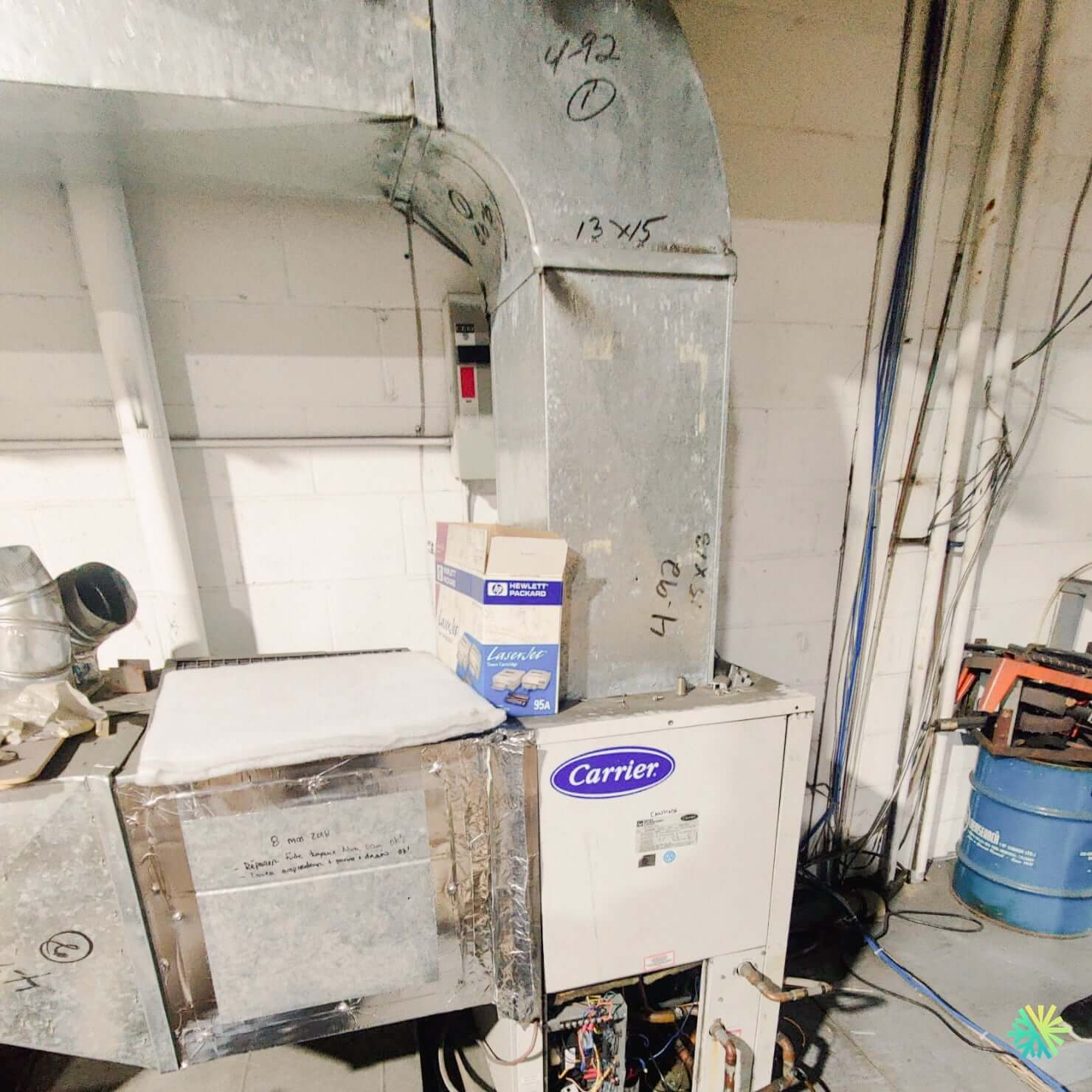Choosing between a central heat pump and a gas furnace: an energy, economic, and environmental challenge
At AirGreen, we help homeowners across Montréal, Laval, Longueuil, the North Shore, and the South Shore make informed decisions about their central heating systems every day. One of the most common questions remains: should we go with a central heat pump or stick with our gas furnace? This is a crucial decision that impacts three major pillars of home comfort: cost, performance, and quality of life.
We’ve created a detailed comparison based on our field experience, the technical specifications of today’s equipment, and the feedback we’ve received from both residential and commercial customers. Follow us through this complete guide to discover which central heating solution best meets your needs.
Cost comparison: upfront investment, maintenance, and energy consumption
Installation cost: a significant difference depending on context
Gas furnaces require a connection to the natural gas network, a compliant chimney, and often a separate ventilation system. For a standard replacement, the cost can range from $4,500 to $7,500 depending on the unit’s capacity and related work.
Central heat pumps, on the other hand, offer a combined heating and cooling system. The initial investment usually falls between $8,000 and $14,000, depending on the brand (Fujitsu, Gree, Bosch, Goodman, Lennox), the BTU rating, and the complexity of the installation.
👉 At AirGreen, we recently installed a Bosch BOVA 36,000 BTU central heat pump in Laval, eligible for a $5,000 LogisVert grant, which significantly reduced the client’s net investment.
Operating costs: clear advantage for the heat pump
Gas furnaces are less expensive to operate during very cold winters due to their strong heating output. However, natural gas prices continue to rise, and their energy efficiency tops out around 85 to 95%.
Central heat pumps, powered by electricity, can achieve seasonal performance ratings (SEER/HSPF) above 300%, meaning they deliver 3 kWh of heat for every 1 kWh consumed. Even when supplemented by backup electric resistance heat during the coldest days, the overall annual savings on energy bills are substantial.
Comfort and air quality: everyday performance and flexibility
Constant temperature vs immediate heat
Gas furnaces deliver fast, powerful heat. However, they often lead to significant temperature fluctuations, with on-off heating cycles.
In contrast, central heat pumps provide more steady and balanced performance, maintaining a consistent indoor temperature—especially beneficial in larger homes. Inverter models (like the Bosch IDS Premium series) automatically adjust their output based on demand, reducing thermal swings.
Indoor air quality
Gas forced-air systems can dry out indoor air and often require more frequent duct cleaning (dust, soot buildup).
Modern central heat pumps are frequently paired with HEPA filters, air exchangers (HRV/ERV), and even integrated humidifiers, making them a better choice for people with allergies or sensitivities.
Environmental impact and grant eligibility
Reducing GHG emissions
One of the strongest arguments for central heat pumps is their role in reducing greenhouse gas (GHG) emissions. In Québec, 99% of electricity comes from renewable sources (hydroelectricity), making heat pumps a truly eco-friendly option.
In contrast, natural gas, while cleaner than oil, is still a fossil fuel. Replacing a gas furnace with a heat pump allows the average Québec household to cut up to 2 tons of CO₂ per year.
Grants and financial incentives
Programs like Hydro-Québec’s LogisVert, Rénoclimat, and Maison Verte offer major subsidies to homeowners who switch to high-efficiency central heat pumps.
For example:
-
Up to $5,000 in rebates for ENERGY STAR certified central heat pump installations
-
Bonus incentives when replacing an older gas or oil system
At AirGreen, we handle the eligibility assessment, document submission, and complete follow-up of the grant process.
Durability, maintenance, and lifespan: what to expect
Preventive maintenance
Gas furnaces require mandatory annual inspections to check the burner, heat exchanger, and exhaust flue.
Central heat pumps, although more complex, are generally easier to maintain. One professional service per year is enough to ensure peak performance. We recommend coil cleaning, refrigerant checks (R-32 or R-454B), and testing of all electronic controls.
Estimated lifespan
-
Gas furnace: 15 to 20 years
-
Central heat pump: 12 to 18 years (depending on maintenance and environment)
Real-life scenarios: when to choose one over the other
Example 1: 2,400 sq. ft. home in Longueuil with existing gas system
The client wanted to increase comfort and reduce dependence on natural gas. We replaced their old furnace with a Gree Versati IV 36,000 BTU central heat pump with built-in auxiliary heating. Result: 30% annual energy savings and better comfort in every room.
Example 2: Duplex in Montréal with outdated heat pump nearing end-of-life
In this case, we recommended a Lennox high-efficiency gas furnace, due to the building’s limited electrical capacity. With new ductwork installation, we improved warm air distribution and enabled zoned temperature control using a smart thermostat.
Our recommendation: custom solutions and real efficiency
At AirGreen, we don’t believe in one-size-fits-all solutions. Every building, every family, every project is different. Our role is to assess your real needs, your building’s layout, your energy habits, and your budget to recommend the best choice between a central heat pump and a gas furnace.
Thanks to our recognized expertise in HVAC installations, our mastery of government rebates, and our local presence across Montréal, Laval, Longueuil, the North Shore, and the South Shore, we offer more than just a quote: we deliver a long-lasting, comfortable, and economical solution.

